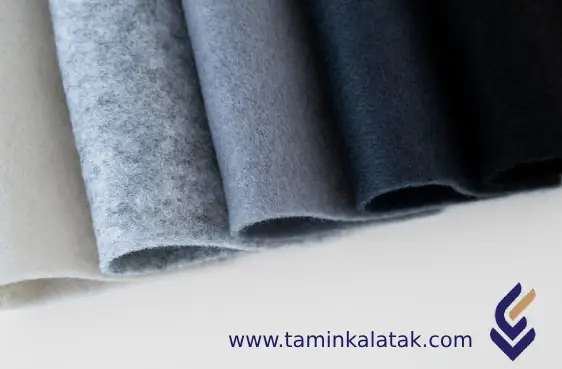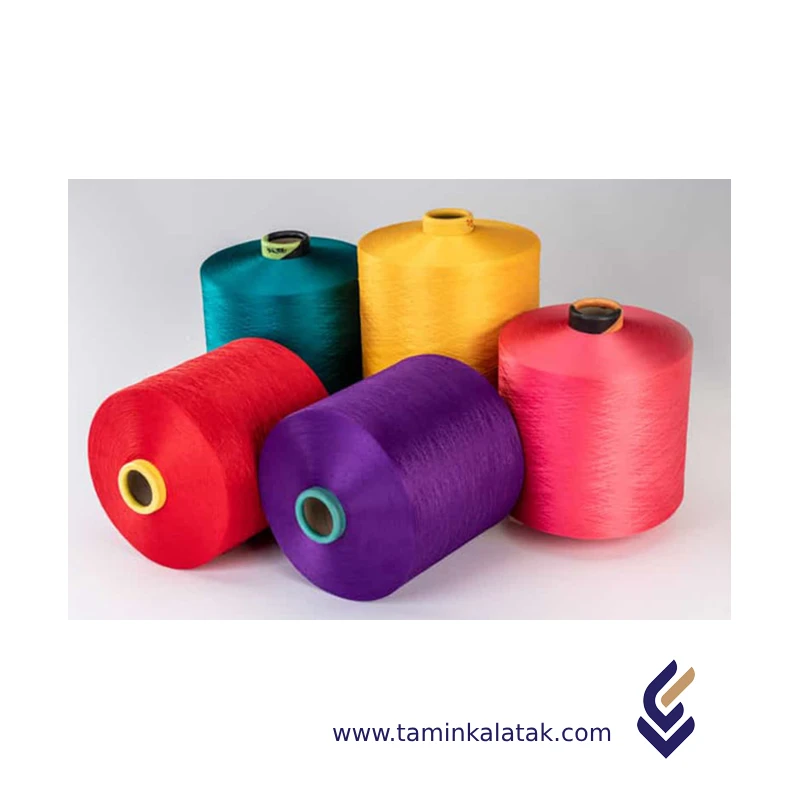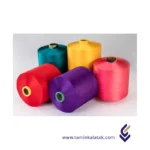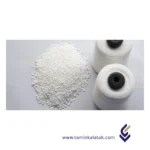Polymers are made up of very large molecules made up of many repeating units called monomers, which ultimately form this long polymer chain
Textile Grade
Textile grade refers to materials that are specifically designed and processed for textile applications, ensuring optimal performance in fabric production. These materials can be natural (like cotton, wool, silk) or synthetic (like polyester, nylon, acrylic).
- Molecular Structure:
- Natural fibers have a cellulose-based (plant fibers) or protein-based (animal fibers) molecular structure.
- Synthetic fibers are often derived from polymer chains, such as polyethylene terephthalate (PET) in polyester.
- Fiber Morphology:
- Fibers are classified as filament (long, continuous fibers like silk) or staple (short fibers like cotton).
- Processing techniques such as spinning, weaving, and knitting alter fiber orientation for enhanced strength and flexibility.
- Surface Treatment:
- Textile grade materials undergo chemical treatments such as dyeing, anti-static coating, moisture-wicking finishes, and UV protection to enhance their functionality.
Properties
Textile grade materials possess distinct characteristics that make them suitable for various applications:
1. Mechanical Properties
✔ High Tensile Strength – Ensures durability and resistance to tearing.
✔ Elasticity – Some fibers (like spandex) stretch and recover their shape.
✔ Abrasion Resistance – Important for heavy-use applications like upholstery and workwear.
2. Thermal Properties
✔ Heat Resistance – Some fibers (e.g., aramid, wool) withstand high temperatures.
✔ Low Melting Point – Certain synthetics (e.g., polyester) require controlled heat processing.
3. Chemical Properties
✔ Moisture-Wicking – Polyester and nylon repel moisture, keeping fabrics dry.
✔ Chemical Resistance – Some textile grades resist acids, alkalis, and solvents.
✔ UV Protection – Certain fibers (e.g., acrylic) naturally block UV rays.
4. Environmental Properties
✔ Biodegradability – Natural fibers decompose over time, unlike synthetics.
✔ Sustainability – Eco-friendly textile grades include organic cotton, recycled polyester, and bamboo fibers.
Applications
Textile grade materials are used across multiple industries, including fashion, home textiles, and technical applications.
1. Apparel Industry
- Clothing – Shirts, pants, jackets, and sportswear.
- Performance Fabrics – Moisture-wicking athletic wear, compression garments.
- Luxury Textiles – Silk, high-thread-count cotton, and premium synthetic blends.
2. Home Textiles
- Upholstery – Durable fabrics for sofas, curtains, and carpets.
- Bedding – Sheets, blankets, and pillowcases.
- Towels & Linens – Cotton-based materials for comfort and absorbency.
3. Industrial & Technical Textiles
- Automotive Textiles – Car seats, airbags, and interior linings.
- Medical Textiles – Surgical gowns, bandages, and antimicrobial fabrics.
- Protective Gear – Fire-resistant clothing (e.g., Nomex), bulletproof vests (Kevlar).
4. Eco-Friendly & Sustainable Applications
- Recycled Textiles – Upcycled polyester from plastic bottles.
- Organic Fibers – Bamboo, hemp, and organic cotton for sustainable fashion.
Advantages
Durability – Textile grade materials are engineered for longevity.
Versatility – Suitable for various applications, from fashion to industry.
Lightweight & Comfortable – Many textiles are breathable and easy to wear.
Easy Maintenance – Many fibers resist stains, wrinkles, and shrinkage.
Cost-Effective – Mass production of synthetics reduces costs.
Sustainability Options – Growing availability of eco-friendly textile grades.
Disadvantages
Environmental Concerns – Many synthetic fibers are non-biodegradable and contribute to plastic pollution.
Flammability – Some textiles require fire-resistant treatments for safety.
Chemical Sensitivity – Certain materials degrade when exposed to strong detergents, acids, or UV light.
Heat Sensitivity – Synthetic fibers like polyester melt at high temperatures, limiting ironing options.
Moisture Absorption Issues – Some fibers retain or repel moisture excessively, impacting comfort.
Applications
PET textile grade(EN)
| Prodact | Grade | MELT POINT(degree of celsius) | VISCOSITY(dL/g) | Process metod | Application / Description |
|---|---|---|---|---|---|
| TEXTILE GRADE | TG-640 S | 255±3 | 0.64±0.01 | ||
| TEXTILE GRADE | TG-640 N | 255±3 | 0.64±0.01 | ||
| TEXTILE GRADE | TG-640 (SB) S | 255±3 | 0.64±0.01 | ||
| TEXTILE GRADE | TG-640 (SB) N | 255±3 | 0.62±0.01 | ||
| TEXTILE GRADE | TG-620 S | 255±3 | 0.62±0.01 | ||
| TEXTILE GRADE | TG-620 N | 255±3 | 0.62±0.01 | ||
| TEXTILE GRADE | TG-620 (SB) S | 255±3 | 0.62±0.01 | ||
| TEXTILE GRADE | TG-620 (SB) N | 255±3 | 0.62±0.01 | ||
| TEXTILE GRADE | TG-640 (MOD) S | 255±3 | 0.64±0.01 | ||
| TEXTILE GRADE | TG-640 (MOD) N | 255±3 | 0.64±0.015 | ||
| TEXTILE GRADE | TG-640 (MOD-SB) S | 255±3 | 0.64±0.01 | ||
| TEXTILE GRADE | TG-640 (MOD-SB) N | 255±3 | 0.64±0.015 | ||
| TEXTILE GRADE | TG-640 (HB) S | 255±3 | 0.64±0.01 | ||
| TEXTILE GRADE | TG-640 (HB) N | 255±3 | 0.64±0.015 | ||
| TEXTILE GRADE | TG-640 (OB) S | 255±3 | 0.64±0.01 | ||
| TEXTILE GRADE | TG-640 (OB) N | 255±3 | 0.64±0.015 | ||
| TEXTILE GRADE | TG-640 (AB) | 255±3 | 0.64±0.01 | ||
| TEXTILE GRADE | TG-640 (FR) | 245±3 | 0.65±0.69 | ||
| TEXTILE GRADE | TG-670 S | 255±3 | 0.67±0.015 | ||
| TEXTILE GRADE | TG-670 N | 255±3 | 0.67±0.015 | ||
| TEXTILE GRADE | TG-570 (CD) | 247±3 | 0.57±0.015 | ||
| TEXTILE GRADE | HT-905/955/1005 | 255±3 | 1.0±0.02 |












